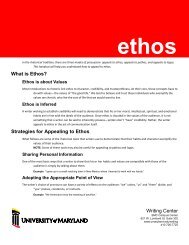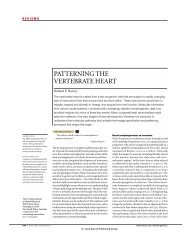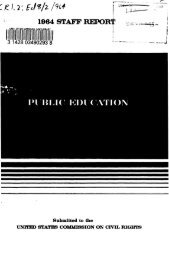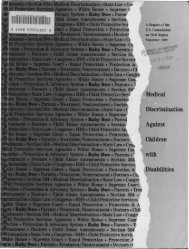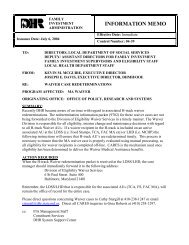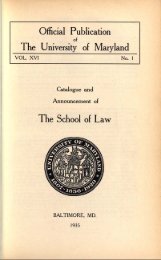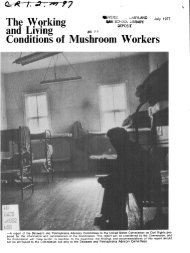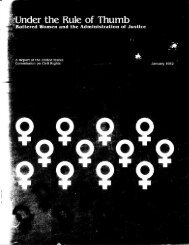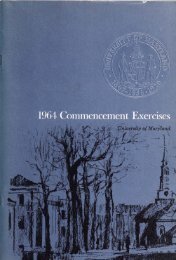1961 US Commission on Civil Rights Report Book 2 - University of ...
1961 US Commission on Civil Rights Report Book 2 - University of ...
1961 US Commission on Civil Rights Report Book 2 - University of ...
Create successful ePaper yourself
Turn your PDF publications into a flip-book with our unique Google optimized e-Paper software.
serves. Thus, Oak Park and Carver pupils would be segregated until<br />
junior high school. But plans include development <strong>of</strong> Carver's educati<strong>on</strong>al<br />
program to the level <strong>of</strong> the other Oak Park elementary schools to<br />
be financed by a 25 percent weighting <strong>of</strong> budget allowances in favor<br />
<strong>of</strong> Carver until that goal is reached. 102<br />
Dillard <strong>University</strong> program<br />
In 1959 Dillard <strong>University</strong> used a foundati<strong>on</strong> grant to start a 3-year<br />
experimental summer program designed to help students prepare for<br />
college by stimulating their study skills and broadening their perspectives<br />
and involvement in significant movements and ideas. 108<br />
Dr. A. W. Dent, president <strong>of</strong> Dillard <strong>University</strong>, explained the need<br />
for this program to the <str<strong>on</strong>g>Commissi<strong>on</strong></str<strong>on</strong>g> at Williamsburg: 104<br />
. . . From what I hear, nearly all colleges are faced with the<br />
problem <strong>of</strong> bridging the gap by <strong>on</strong>e means or another between a<br />
student's achievement at the time <strong>of</strong> high school graduati<strong>on</strong> and<br />
what is expected <strong>of</strong> a college freshman. For colleges with predominantly<br />
Negro students, the problem is particularly acute and<br />
additi<strong>on</strong>ally complicated by the many deprivati<strong>on</strong>s inherent in<br />
racial segregati<strong>on</strong>.<br />
The particular aim <strong>of</strong> the Dillard program, Dr. Dent said— 105<br />
... is to provide motivati<strong>on</strong>, which they have not had up to this<br />
point, and to ... [show them] that they do not necessarily need<br />
to be deprived from this point <strong>on</strong>. If I may tell you just a story<br />
which I told to these youngsters who came in last year, I was told<br />
the story <strong>of</strong> a little boy 6 years old who went to public school for<br />
the first time . . . and when everybody else was sitting, the little<br />
boy wanted to stand, and he just stood up, and the teacher said to<br />
him: "Sit down, Johnny." But Johnny didn't sit. And she said<br />
to him a sec<strong>on</strong>d time: "Sit down, Johnny." And he didn't sit.<br />
The third time she walked over to his seat and put her two hands <strong>on</strong><br />
his shoulders and just pushed him down in his seat, and he looked<br />
up at her and said: "You can push me down, if you want to, but<br />
in my mind I'm still standing up."<br />
The Dillard program is <strong>on</strong>e to teach the Negro youth <strong>of</strong> the South to<br />
stand up in their minds.<br />
Dillard's approach, Dr. Dent explained, is based up<strong>on</strong> the following<br />
assumpti<strong>on</strong>s 108 —<br />
134<br />
(i) that most graduates <strong>of</strong> Negro high schools in the South are<br />
inadequately prepared for standard college work;



